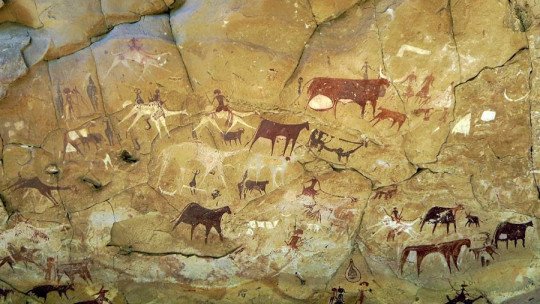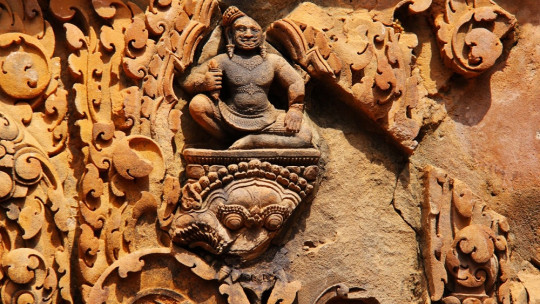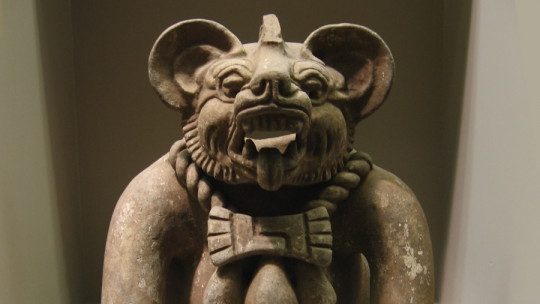
Have you heard of totemism? It is the set of practices, meanings and beliefs associated with the totem, a figure or a natural object, plant or animal, that symbolizes a certain tribe or human group in some civilizations.
The totem, from which all these people mystically descend, can take many forms. Totemism, for its part, is configured as a system of beliefs of all kinds associated with this figure, and is a concept linked to anthropology and religion, which has had important repercussions on human behavior.
In this article we tell you everything about totemism and the totem, don’t miss it!
Totemism and totem: what are they?
Totemism is a phenomenon linked to the totem, which is a natural or inanimate object (figure) (it can also be an animal or a plant) used, in the world of mythology, as symbol of the tribe or the individual in some cultures or societies
The totem is a symbol that spiritually represents a group of people (such as the so-called clans), and that also symbolizes the blood bond that unites all the members of a certain community or social group.
On the other hand, the totem includes a wide variety of meanings, as well as attributes, for each group or society to which it is linked (or to which it “belongs”). So, Totemism, specifically, encompasses all those beliefs and manifestations, both spiritual and social, that are associated and linked to this figure, the totem
If we go to a more global definition, totemism is configured as a system of religious, political and social beliefs around the totem, but also around the tribes and primitive peoples behind this figure.
From the perspective of totemism, the totem constitutes the beginning or origin of a certain human group, which, in turn, descends from that totem. That is, said human group believes that it descends from its totem, and that is why it praises it.
The term and phenomenon of totemism comes from the Ojibwa culture, which, in turn, comes from North America. However, the presence of totemism has also been confirmed in a wide variety of continents, human societies and eras, that is, throughout all of human evolution.
Spirituality and animals (the totem)
As we have seen, the figure of the totem with which totemism is linked can take many forms. One of them is the shape of the animal; in this sense, many indigenous tribes of North America (or even native nations) attributed outstanding qualities to animals such as supernatural forces or more spiritual qualities.
That is, in this sense, for centuries animals (especially some of them) have been related to spirituality.
Specifically, the animals most recognized by the aforementioned tribes and nations of North America, used to represent totemism through the totem, have been: the fish, the bison, the badger, the bear and the falcon among others.
As a curious fact, for other cultures animals were a symbol that allowed us to reflect or represent the three levels of the human being: the unconscious self (lower self), the mental self (middle self) and the higher self (which was represented with a bird and which symbolized expansion).
The concept of totemism: general characteristics
The concept of totemism comes from anthropology, and It became known thanks to the Scotsman McLeann in 1870, in London In fact, McLeann defines totemism literally as “a fetishism that includes exogamy and matrilineal descent.”
On the other hand, although it is a concept closely related to religion, totemism is not based on it for everyone. In the next section we will see what relationship it may have with religion.
On the other hand, beyond the aforementioned definition, totemism also It has to do with the relationship between humans and nature It encompasses a series of ideas, symbols and practices, all of them between an individual or social group and an object, animal or even plant (the totem). If we get more mystical, totemism includes that relationship between the natural and the cultural.
Thus, totemism is also a term used to encompass all those ideas and practices based on the belief that there is a relationship of kinship and a mystical nature between a social group (or a person) and a certain object of nature (such as be the totem). It is a belief of very ancient origin deeply rooted in primitive man, inherent to him.
Link with religion
Regarding the relationship between totemism and religion, this phenomenon has been treated, in many cultures, as a belief linked to animist-type religions
Animism, for its part, is a term used to refer to the beliefs that establish that objects and any element of the natural world (for example, the sky or the earth) are endowed with life, soul, consciousness or even movement.
Theories of totemism
Some researchers have made interesting theoretical contributions on totemism. One of them is AP Elkin, an expert researcher on Australian aboriginal tribes, who divides totemism into different types or species: individual, social, cultural and dream (which in turn can be social or individual).
On the other hand, B. Malinowski, also a researcher, is the author of a naturalistic and utilitarian theory on totemism; according to him, totemism It is born from the natural conditions of the context, influenced by the human interest in plants and animals for food purposes
On the other hand, according to this theory, the magical rituals that are practiced on the totem would ensure the subsistence of the social groups that are conferred on the totem.
Where does it manifest?
Totemism is not the same in all contexts and societies; That is, it can take different forms and typologies.
Where the phenomenon of totemism has been found most is among those towns that mixed the economy through hunting and farming activities ; also in hunting communities (especially in Australia), or in agricultural tribes that raised livestock.
Functions or repercussions of this cultural phenomenon
It is not that totemism has a function “in itself”, but it is true that all the beliefs that are associated with it have had repercussions on the behavior of certain social and ethnic groups, specifically in their constitution as a group, in their socialization (and their way of relating) and in the formation of their personality. That is, totemism has exerted a series of influences on these social groups that we cannot deny.








